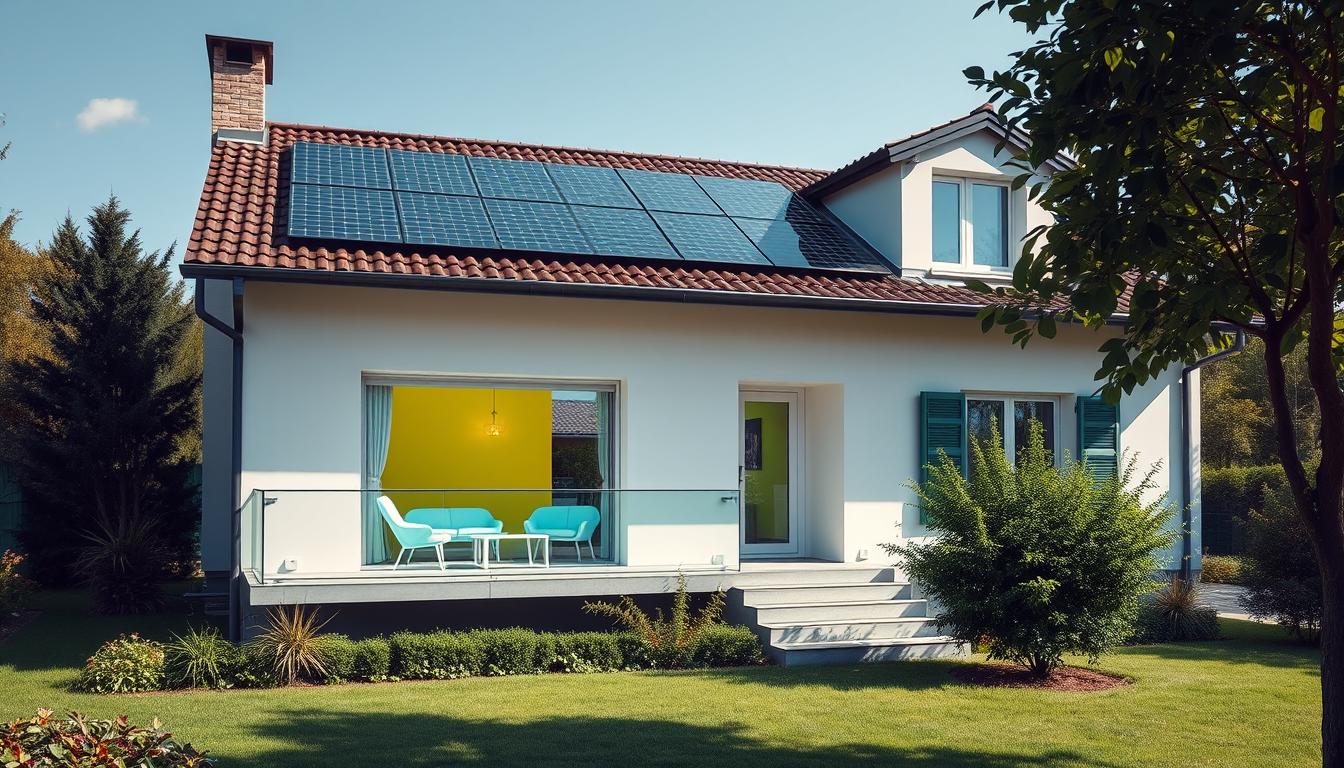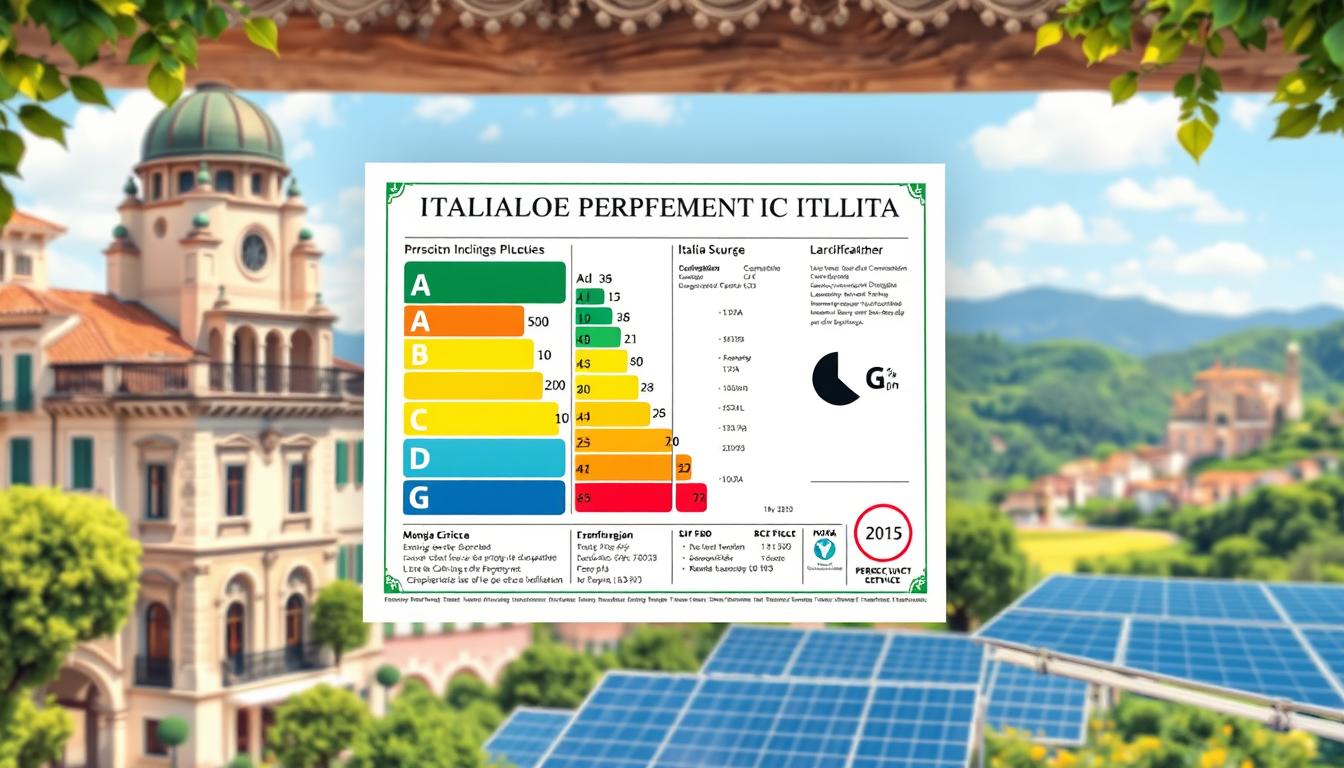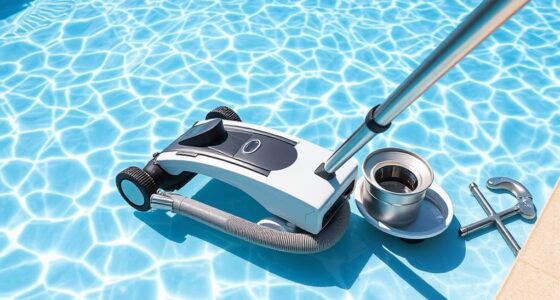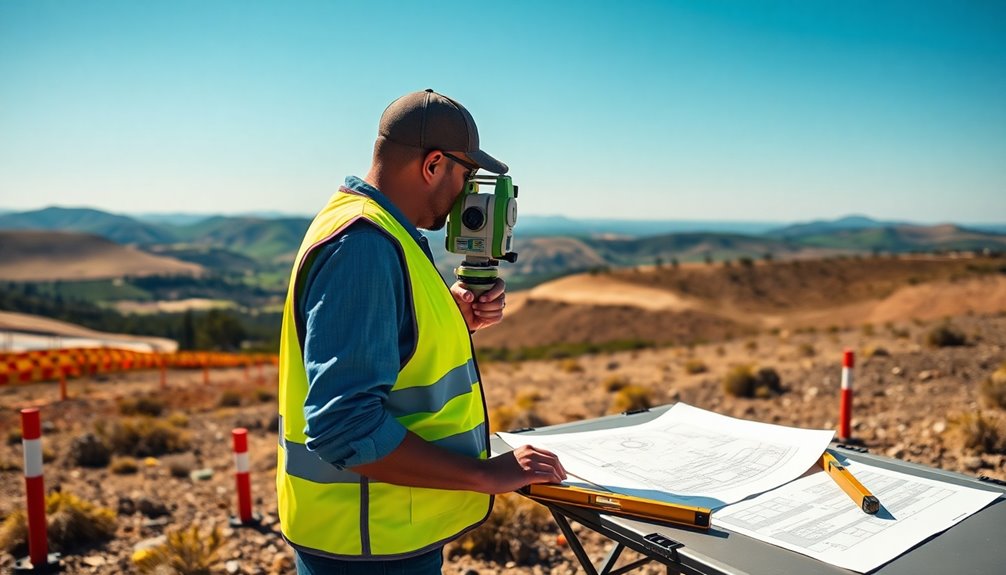Did you know that Italy made energy ratings for buildings mandatory in 2012? This was to follow European rules to cut down energy use1. This change has really affected the Italian real estate market. Now, energy efficiency is key when buying, selling, or renting homes.
Knowing your home’s energy rating can save you money and help the planet. In Italy, ratings go from A4 (best) to G (worst)1. It’s important to know where your home falls.
In Italy, there are 10 energy efficiency levels. The rating shows how much energy a home uses, like for heating1. Every property in Italy needs an Energy Efficiency Certificate (APE)2. This certificate shows how much energy a home uses for heating and cooling each year2.
More than half of Italian homes have low ratings of “F” and “G”2. This shows there’s a lot of room for improvement.
Key Takeaways
- Energy performance certification is mandatory for buildings in Italy1.
- There are 10 levels of energy efficiency ratings in Italy, ranging from A4 to G1.
- Energy Efficiency Certification (APE) is mandatory for all properties in Italy2.
- The energy efficiency rating in Italy ranges from “A4” (most efficient) to “G” (least efficient)2.
- Understanding your home’s energy efficiency rating can help you save on energy costs and reduce your environmental footprint.
- The average cost of an energy performance certificate in Italy ranges from €80 to €300-4001.
Understanding Building Energy Efficiency Rating in Italy
In Italy, the Energy Performance Certificate (APE) is key when buying or renting a property. It shows how much energy a building uses and suggests ways to use less. The Italian government has set rules for energy use in buildings, following EU rules3.
The APE rates buildings from A4 (most efficient) to G (least efficient). This helps buyers and renters know a building’s energy worth.
The APE focuses on non-renewable energy sources3. It uses standards like UNI/TS 11300 to calculate energy use. This includes heating, cooling, and using renewable energy3.
The Italian energy rating scale is vital for judging a building’s energy efficiency. It affects a building’s value and appeal to others.
A study found a machine learning model could guess a building’s energy class 37% of the time4. It showed that a building’s size and value are key in predicting energy use4.
The Italian plan aims to cut energy use by 43% by 20305. Knowing about the Italian energy rating helps you make better choices when looking for a place to live in Italy.
Benefits of Getting Your Home’s Energy Rating Assessed
Getting your home’s energy rating assessed offers many benefits. You can save money on utility bills and boost your property value. By knowing your home’s energy performance, you can spot areas for improvement. This helps you make smart choices for renovations and upgrades6.
This can lead to big savings over time. Plus, your property value will likely go up when you sell7.
Some key benefits of an energy assessment include:
- Lower energy use and bills
- Higher property value and appeal
- Better energy efficiency and less environmental harm
In Italy, homes are rated from A4 (most efficient) to G (least efficient)8. Knowing your home’s energy class helps you find ways to improve. This can save you money and increase your property value.

Getting your home’s energy rating is a smart investment. It can lead to big savings and a higher property value over time. By understanding your home’s energy use and making smart upgrades, you can make it more efficient. This also helps the environment6.
| Energy Class | Energy Consumption | Cost Savings |
|---|---|---|
| A4 | Low | High |
| G | High | Low |
When Do You Need an Energy Performance Certificate?
In Italy, you need an Energy Performance Certificate (APE) in certain situations9. This certificate shows how energy-efficient a building is. It’s required for property sales, transfers, and rental agreements9.
Getting an APE is necessary for renting a home for over 30 days, listing a property for sale or rent, selling a new building, and planning renovations that change the energy use9. The certificate is valid for 10 years. The seller or landlord must give it to potential buyers or tenants9.
Here are some key points to consider:
- Property sales and transfers need an APE to show the building’s energy efficiency to buyers.
- Rental agreements also need an APE to tell tenants about the property’s energy performance.
- Building renovations that change energy use need a new APE to show the updates.

The APE rates energy efficiency from A (most efficient) to G (least efficient)9. Knowing about APE requirements and its validity is key. It helps follow Italian law and makes informed decisions when buying, selling, or renting10.
| Energy Efficiency Rating | Description |
|---|---|
| A | Most efficient |
| B | Highly efficient |
| C | Average efficiency |
| D | Below average efficiency |
| E | Low efficiency |
| F | Very low efficiency |
| G | Least efficient |
The Assessment Process Step by Step
In Italy, the energy assessment starts with a detailed home inspection by a certified technician. They check the building’s energy use and give an APE (Attestato di Prestazione Energetica) certificate11. This step is key to figuring out a building’s energy efficiency and spotting areas for betterment. The inspector looks at insulation, windows, and heating systems to measure energy performance12.
The APE issuance comes from the energy assessment findings. It shows how much energy the building uses and how much can be saved13. The APE certificate is vital for building owners. It helps them understand their building’s energy use and guides them in making smart choices for energy-saving upgrades.

Getting an APE certificate is the first step for building owners to cut down on energy use and help the planet11. The energy assessment is a great way to find ways to use less energy. It helps owners make smart choices for upgrades and renovations based on real data12.
Key Factors That Affect Your Home’s Energy Rating
Several elements affect your home’s energy efficiency. Insulation is key in reducing heat loss and gain. This means you need less heating and cooling14. A well-insulated home is more energy-efficient, making it crucial to check your insulation.
Heating and cooling systems, like HVAC, also impact your home’s energy rating15. Almost 60% of Italian homes need better HVAC systems15. Adding renewable energy sources, like solar panels, can also improve your home’s rating16.
Here are important factors to consider for your home’s energy efficiency:
- Insulation quality: Proper insulation reduces heat loss and gain, cutting down on heating and cooling needs.
- HVAC systems: Efficient HVAC systems can greatly improve your home’s energy rating.
- Windows and doors: Energy-efficient windows and doors help reduce heat loss and gain.
- Renewable energy sources: Adding renewable energy sources, like solar panels, can increase your home’s energy rating14.

Understanding these factors and improving them can raise your home’s energy rating and lower energy use16. Small changes can lead to big improvements over time.
| Energy Efficiency Factor | Description |
|---|---|
| Insulation | Reduces heat loss and gain, minimizing the need for heating and cooling |
| HVAC Systems | Efficient systems can significantly improve your home’s energy rating |
| Renewable Energy Sources | Incorporating sources like solar panels or geothermal systems can boost your home’s energy rating14 |
Finding a Qualified Energy Assessor in Italy
To get an accurate energy rating for your home in Italy, you need to find a qualified energy assessor. These experts, known as certified energy assessors or APE technicians, have the right training. They check walls, doors, windows, and systems to assess your home’s energy efficiency. They use special software to give your property an APE17 rating.
When looking for an energy assessor, check for regional accreditation and professional qualifications. You can find certified professionals online or through referrals. Important questions to ask include:
- What experience do you have with energy assessments in Italy?
- What certifications and qualifications do you hold?
- Can you provide references from previous clients?
In Italy, buildings use about 40% of the total energy16. The Energy Performance Certificate (EPC) is key for improving energy use in buildings. Choosing a reputable assessor ensures an accurate rating and helps make your home more energy-efficient.

In Italy, the EPC is part of the EU’s energy policy since 200216. It rates buildings from A to G, with A being the best and G the worst. A qualified assessor can help you understand your home’s energy use and suggest improvements.
| Energy Efficiency Classification | Description |
|---|---|
| A | High energy performance |
| B | Good energy performance |
| C | Average energy performance |
| D | Low energy performance |
| E | Very low energy performance |
| F | Extremely low energy performance |
| G | Minimum energy performance |
Costs and Timeframes for Energy Assessments
Understanding the costs and time needed for energy assessments in Italy is key. The price varies by region, with regional pricing differences playing a big role. On average, you might pay between €80 and €300/400, depending on where you live, your home’s size, and the technician’s skills18.
The APE timeframe also matters a lot. It tells you how long the assessment will take. It can take a few days to a few weeks, based on how complex the assessment is and when the technician is available. Remember, energy assessment costs are part of your budget, and extra costs for documents might pop up19.
Here’s a rough idea of what you might spend:
| Service | Cost |
|---|---|
| Energy Assessment | €80-€300/400 |
| Additional Documentation | €50-€100 |
These prices are just estimates. The real cost could be different, based on where you are and the technician’s experience20.
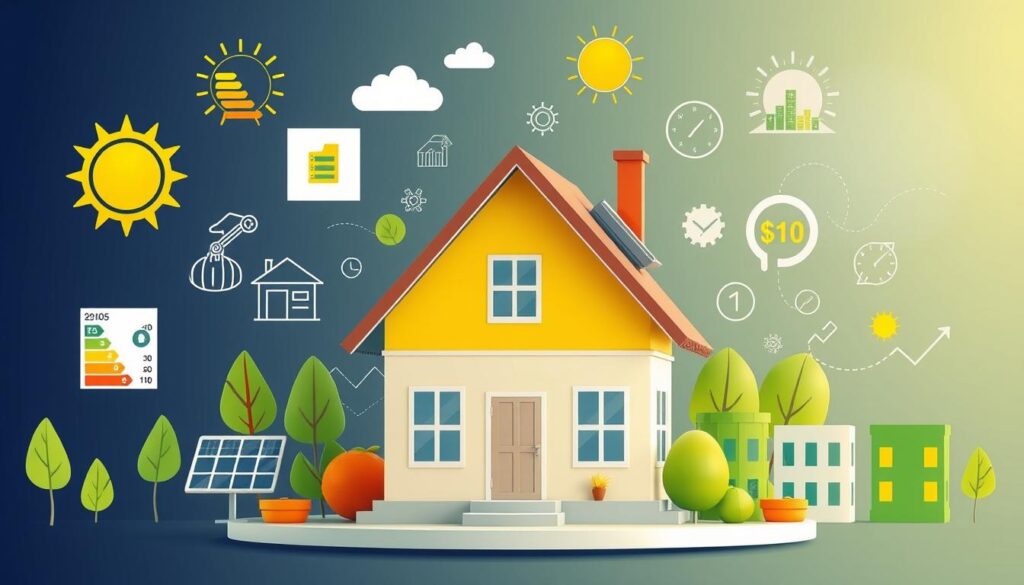
How to Improve Your Home’s Energy Rating
To boost your home’s energy efficiency, look into energy efficiency upgrades and home improvements. These can greatly improve your rating enhancement. Replacing your water heater, upgrading radiators, and installing a low-consumption AC system are good starts21. Also, adding solar panels, replacing windows, or improving wall insulation can help22.
When improving your home’s energy rating, think about insulation, heating and cooling systems, and renewable energy14. These upgrades can cut down energy use and make your home more efficient and green. Smart technologies can also lead to big energy savings21.
Here are some steps to better your home’s energy rating:
- Do an energy audit to find areas to improve
- Put in energy-saving appliances and lights
- Upgrade insulation and windows
- Think about solar panels or other green energy
By taking these steps, you can raise your home’s energy rating and help the planet22. Don’t forget to look for financial help and support programs to cover the costs14.
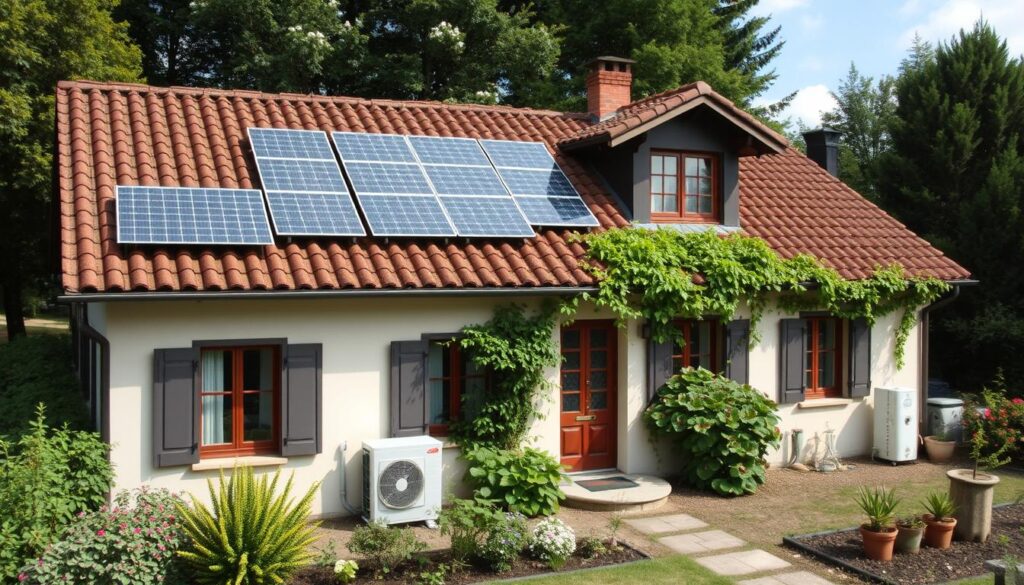
Financial Incentives and Support Programs
Thinking about making your home more energy-efficient in Italy? There are many financial incentives and support programs to help. The Italian government has initiatives to encourage homeowners to upgrade. These can save you money on energy bills and help the planet.
The eco-bonus for energy saving offers tax deductions of 50% to 65% (up to 75% for condos)23. The renovation bonus gives a 50% tax deduction for certain home improvements23. You can also get help from regional programs to save even more.
The following table summarizes some of the key financial incentives and support programs available in Italy:
| Program | Description | Benefits |
|---|---|---|
| Eco-bonus | Income tax deductions for energy-efficient upgrades | 50-65% tax deduction (up to 75% for condominium works)23 |
| Renovation bonus | Tax deduction for maintenance, restoration, and renovation works | 50% tax deduction23 |
| Regional support programs | Additional incentives for energy-efficient upgrades | Varying benefits depending on the region24 |
By using these incentives, you can cut your energy use and bills. Check out what’s available in your area and talk to a pro to get the most savings.
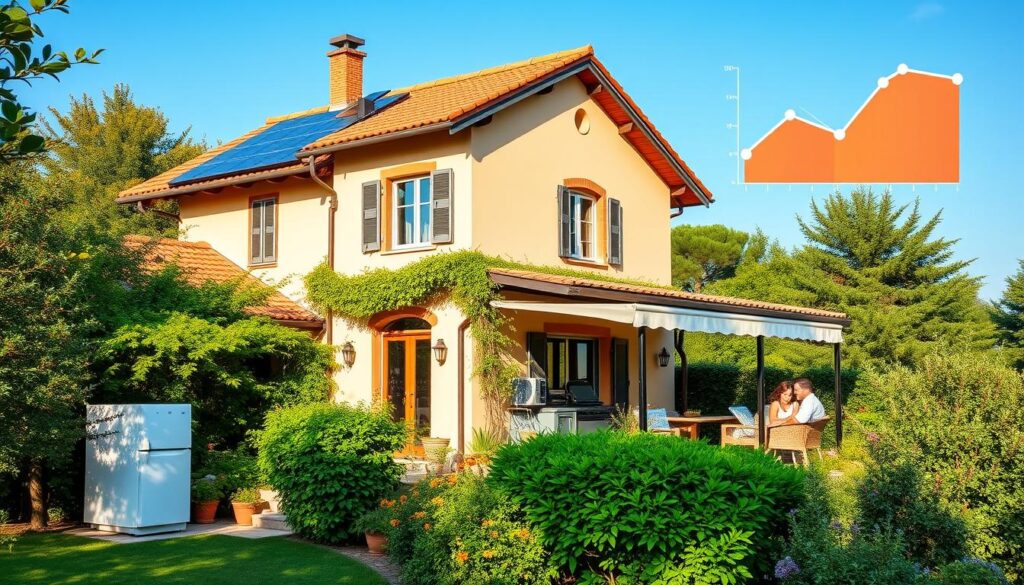
Common Mistakes to Avoid During Assessment
When doing energy assessments, efficient home preparation is key to avoid mistakes. One big error is not making sure all parts of the home are easy to get to. This can cause APE mistakes25. To fix this, homeowners should clear out clutter, make sure all doors and windows are open, and have all needed documents ready26.
Some common mistakes to steer clear of during energy assessments include:
- Not giving correct info about the home’s energy use
- Not making sure all parts of the home are easy to get to
- Not having all needed documents, like energy bills and upgrade receipts
By avoiding these mistakes, homeowners can get an accurate energy assessment and avoid errors17. This leads to better home preparation and the right APE25.

The report on Advanced quality and use of energy performance certificates (EPCs) shows EPCs are key for improving energy use in buildings in the EU since the early 2000s17. By avoiding mistakes and preparing homes well, homeowners help cut down energy use and boost energy efficiency in buildings25.
| Mistake | Consequence |
|---|---|
| Not providing accurate information | Energy assessment errors |
| Not ensuring all areas are accessible | APE mistakes |
| Not providing necessary documentation | Inaccurate energy assessment |
Conclusion: Making Your Home Energy-Efficient in Italy
Improving your home’s energy efficiency can save you money and help the environment. It can also make your home more valuable. The energy efficiency rating is key to see how well your home works and get help to make it better.
The Italian government is focusing on making homes more energy-efficient. This is a great time to check how your home uses energy and find ways to improve. Upgrading insulation, changing windows and doors, or using renewable energy are all good steps.
Working with an energy assessor and using available financial help can make your home a model of sustainability. This leads the way to a greener future in Italy.
FAQ
What is an APE (Attestato di Prestazione Energetica)?
What is the Italian energy rating scale?
When is an Energy Performance Certificate (APE) required in Italy?
How do I find a qualified energy assessor in Italy?
What factors influence a home’s energy rating in Italy?
What are the costs and timeframes associated with energy assessments in Italy?
What financial incentives and support programs are available in Italy for improving home energy efficiency?
What are the common mistakes to avoid during the energy assessment process?
Source Links
- https://www.gate-away.com/blog/expert-building-energy-efficiency-rating-explained/
- https://dolce-living.com/post/ape-italy-energy-guidelines/
- https://gbcitalia.org/wp-content/uploads/2022/12/SMARTER-Energy-Efficency-in-Italy-GBC-Italia-ENG-2019_08_29.pdf
- https://www.suerf.org/publications/suerf-policy-notes-and-briefs/forecasting-energy-performance-certificates-epc-ratings-in-italy-using-machine-learning-techniques/
- https://www.ca-epbd.eu/Media/638373598968137658/Implementation-of-the-EPBD-in-Italy-2020.pdf
- https://www.interimmobiliagency.it/en/energy-class-its-importance-in-property-purchase-or-rental/
- https://preciousvillas.com/what-is-the-energy-certification-in-italy/
- https://blog.casaomnia.it/en/energy-certification/
- https://detulliolawfirm.com/italian-energy-performance-certificate-epc-attestato-di-prestazione-energetica/
- https://resources.taloen.fr/resources/documents/693_220725-Fiche_IT_VF.pdf
- http://www.crbnet.it/file/pubblicazioni/pdf/1566.pdf
- https://iris.unibas.it/retrieve/dd9e0b51-3adf-1e84-e053-3a05fe0aa940/sustainability-11-00249.pdf
- https://www.iieta.org/journals/mmc_b/paper/10.18280/mmc_b.870302
- https://www.vaia.com/en-us/explanations/italian/italian-social-issues/energy-efficient-buildings-italy/
- https://www.e3s-conferences.org/articles/e3sconf/pdf/2024/53/e3sconf_aicarr2024_04005.pdf
- https://www.abengineeringsrl.it/en/diagnosis-energy-performance-certificates
- https://publications.jrc.ec.europa.eu/repository/bitstream/JRC125031/JRC125031_01.pdf
- https://gbcitalia.org/wp-content/uploads/2021/09/EeMAP_Building_Assessment_Briefing_ITALY.pdf
- https://re.public.polimi.it/bitstream/11311/971857/4/Italian local codes for energy efficiency of buildings_11311-971857_Masera.pdf
- https://energy.ec.europa.eu/topics/energy-efficiency/energy-efficient-buildings/energy-performance-buildings-directive_en
- https://www.fantinicosmi.it/en/energy-classification-how-to-achieve-the-highest-classes/
- https://www.rockwool.com/group/advice-and-inspiration/blog/renovation-gets-a-super-boost-in-italy/
- https://www.idealista.it/en/news/financial-advice-italy/2020/01/13/2658-green-building-incentives-italy-how-make-your-home
- https://energy.ec.europa.eu/system/files/2021-12/2020_ltrs_italy_-_en.pdf
- https://www.mdpi.com/2075-5309/13/3/582
- https://www.aicarr.org/Documents/Convegni/Workshop2008/MASOERO – Inspection and Energy Auditing of HVAC.pdf
